|
Secretarial: During 1937 and 1938 while loaned out by the Lockheed Company as private pilot for
Lord Beaverbrook, the British Industrialist, publisher, and cabinet member during the two World Wars, I answered much of his
correspondence, assisted him some in writing editorials, and contributed some articles to his papers.
(Co-pilot Hume Rolfe Earnest and Pilot Harry Ira Downes, for Lord Beaverbrook.)
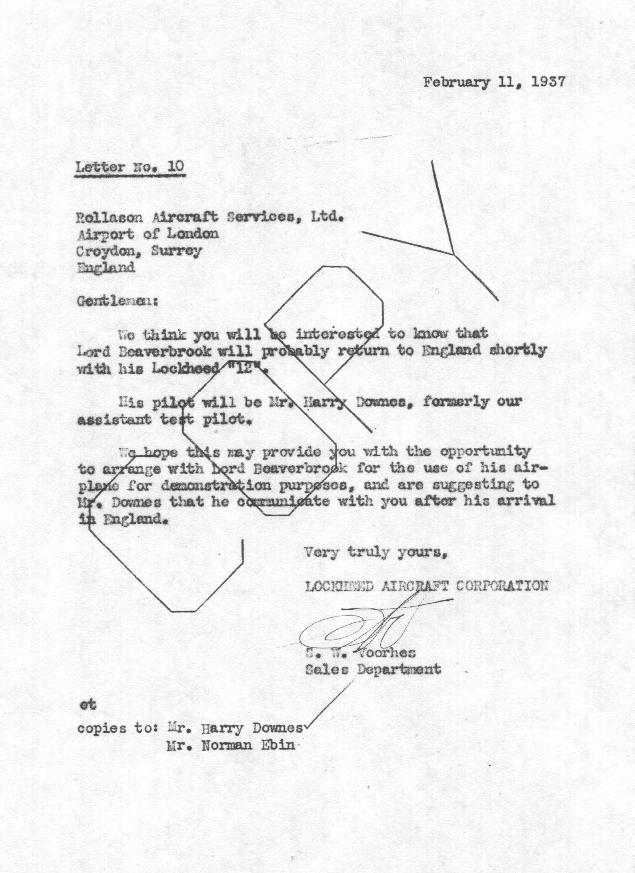
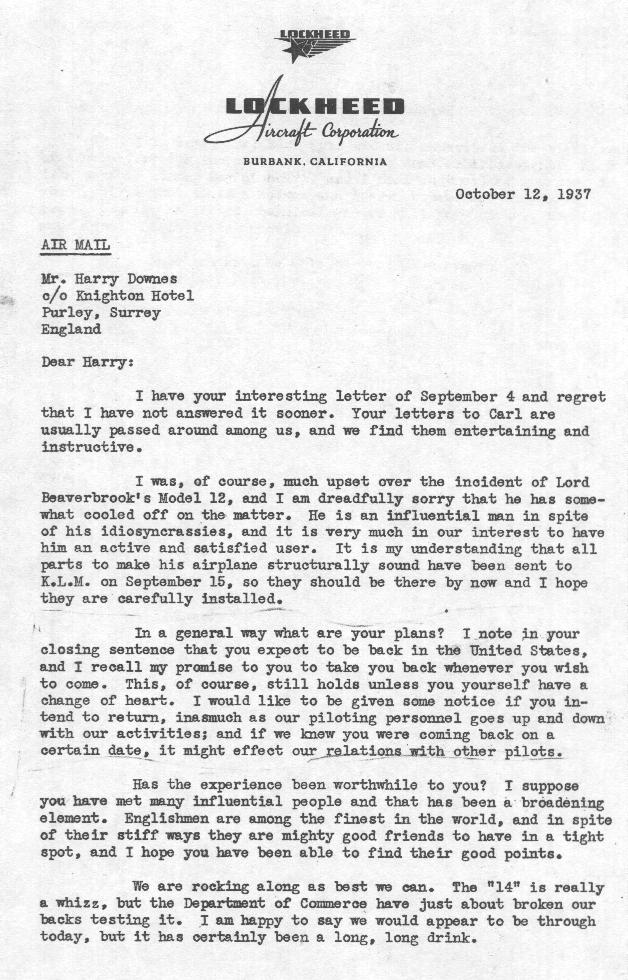

(The Carl mentioned in this letter was Carl Squier.)
(Robert Gross life story is a prime example of the risks and opportunities of capitalism. The 1929 stock market crash and
its accompanying depression had already destroyed his Viking Flying Boat Company when he purchased the bankrupt Lockheed Company
for $40,000 in 1932. The gamble paid off big, as Gross lifted the company out of the red and, within ten years pushed the
Lockheeds yearly sales to nearly $150 million.)
(The Grumman Goose was a twin-engine amphibian designed primarily for the civil market. The eight-seat design first flew
on 29 May 1937. However, it's modern design quickly garnered the attention of various militaries. The RCAF acquired the first
example for use in 1938.)
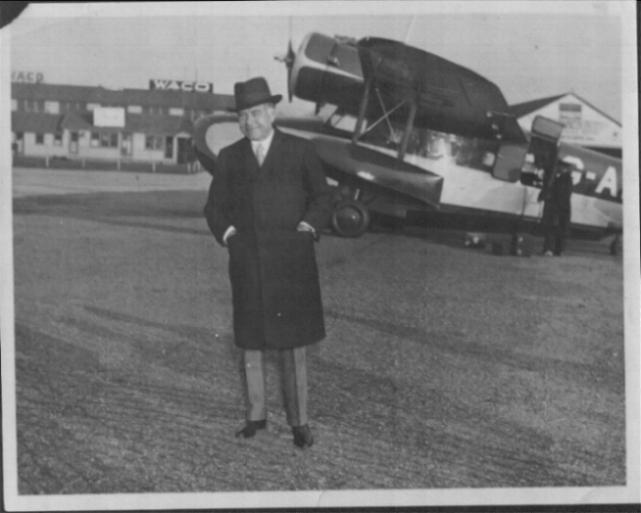
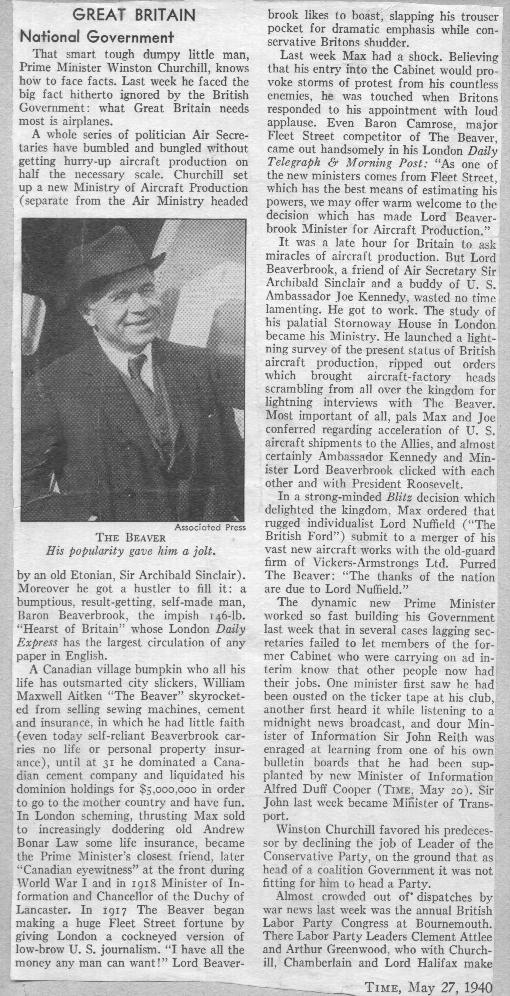
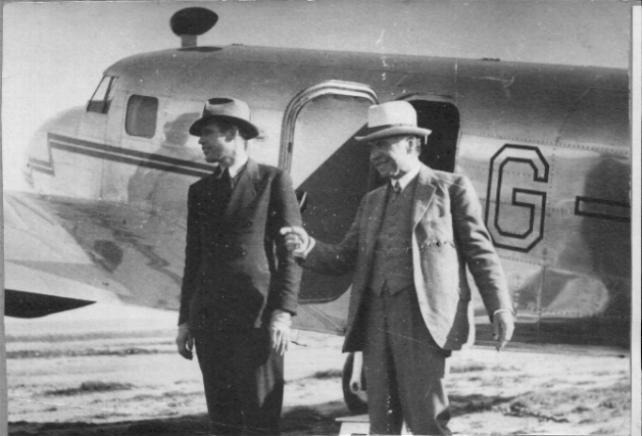
(My Dad with Lord Beaverbrook)
(W. Hamblin, wireless operator for Lord Beaverbrook on right and the Airport Manager at Cannes, France Apr. 22, 1937.
The Aircraft is a Lockheed "12". Note the portable Aircraft Hangars in background. The Airport was about 4 miles west of the
city.)
(Cannes Airport, France 1937. Caudron Aircraft in forground.)
(2 French Bombers at Cannes, France 1937. Sorry for the faded picture.)
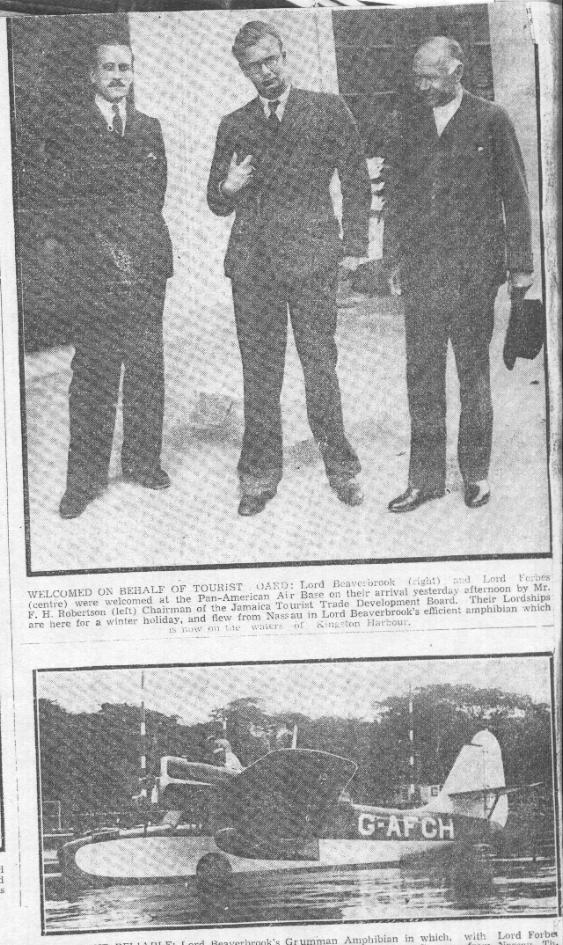
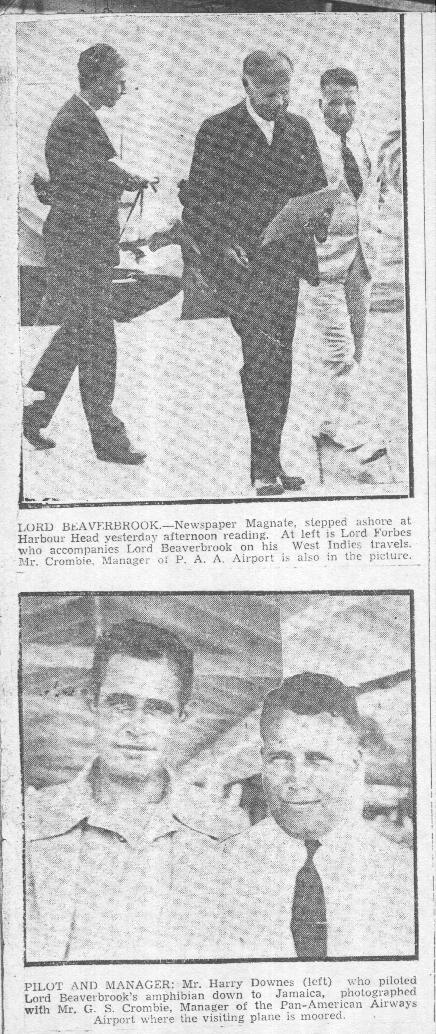
(While flying for Beaverbrook you get to meet some pretty interesting people. "Kind of like 007" On one flight dated
9 June 1937 while flying Beaverbrooks Lockheed "12" over Germany from Croydon, England taking pictures they landed at Mukich
Germany where the film was found and destroyed by the Germans. The reader needs to remember here, that my father started his
aviation career by learning to become an Aviation Photographer, and it would stand to reason that Beaverbrook would take advantage
of that fact. I would like to think that the pictures dad helped to take were some of the ones used for the bombing of Germany.
There were other flights where pictures were taken that were not found.)
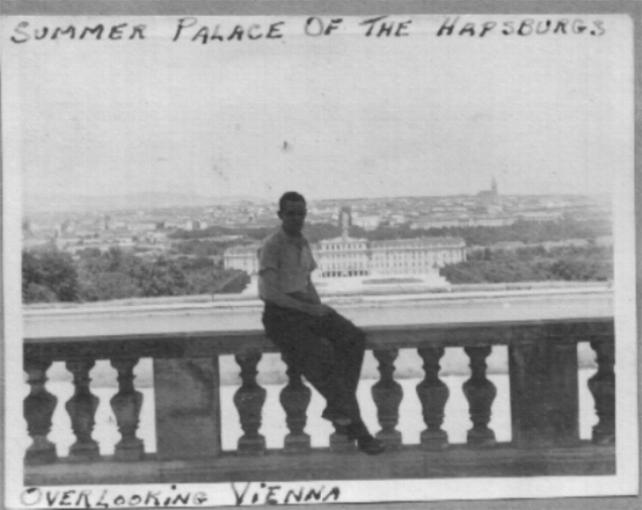
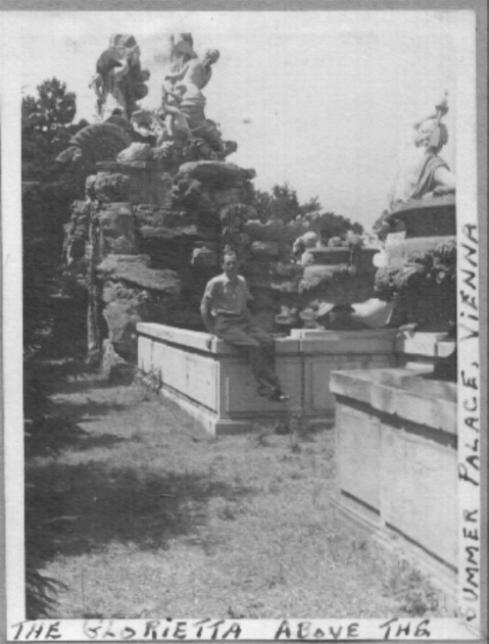
(The living conditions came with the job.)
While a Captian in the A. A. F. during the latter part of World War II, I made the investigations and wrote the official
reports of many of the B-29 crashes.
.
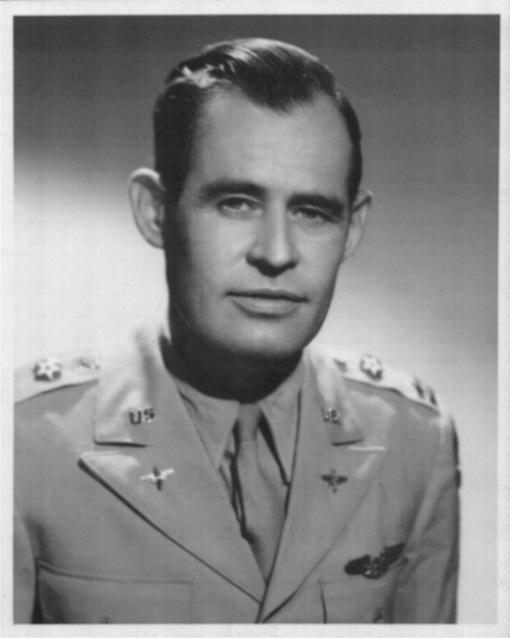
Sales: As a factory pilot, I have sold and helped sell millions of dollars worth of aeroplanes. In 1936
I personally sold thirteen small Lockheed transports to our Navy. This was Lockheeds first order from the Military forces.
I have sold aeroplanes to people such as the Maharajahs of Jodphur & of Kashmir and have assisted in selling to various
airlines, industrial companies and private individuals.
When the British purchasing commission arrived in Los Angeles early in 1938, I,
by my previous association with Lord Beaverbrook, was able to help Lockheed land the first huge order let by that Commission.
(A Lockheed team, including Courtlandt Gross, Clarence "Kelly" Johnson, Carl Squier, Richard Von Hake and Robert Proctor,
went over to the UK to negotiate with the Air Ministry. During the course of meetings between the Lockheed team and the Air
Ministry, a decision was reached to replace the proposed dorsal turret with a Boulton-Paul turret carrying a pair of 0.303-inch
machine guns and to mount a pair of 0.303-inch machine guns in a fixed forward-firing position in the upper nose over the
navigator's position. The bomb load was decreased to 1600 pounds, made up of four 250-lb bombs and ten 100-lb bombs. The engines
were changed to a pair of 1100 hp Wright GR-1820-G102A nine-cylinder air-cooled radials. On June 23, 1938, the Air Ministry
agreed to order 200 Model B14Ls (RAF serials N7205/N7404), plus as many more that could be delivered by December
of 1939, up to a maximum of 250 aircraft. "NOTE The British Air Ministry was Lord Beaverbrook and it was my fathers connection
with the Beaver that helped Lockheed close this big sale even tho it was Carl Squier that got the credit. If you will reread
the Lockheed letter written by Robert Gross you will note Lord Beaverbrook was not very happy with Lockheed due to problems
with his Lockheed 12. The Aircraft had to be flown to Amsterdam, Holland on 27 Aug. 1937 for some major repair due to Tail
Flutter that occured on a flight from Croydon, England to Deauville, France on 23 Aug. 1937.")
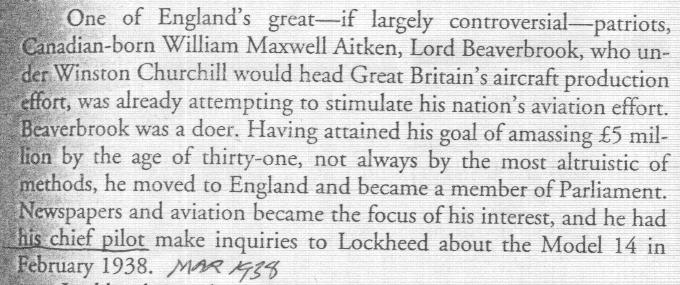
(My father at this time was Beaverbrooks chief pilot. I don't know why, but Lockheed never gave dad any credit for his
part in one of the largest sales they ever made. Its almost like he never existed, I can't even find any record of him as
being a test pilot for Lockheed, but I know he was. "It makes me wonder if it had anything to do with the Mint Canyon
crash when Dad refused to take the aircraft up because of the fog. I feel that it may have been embarrassing for Lockheed
to have all the news papers tell of dad's refusal to take the aircraft up, and yet they flew it anyway." I've been told by
British Historians that Beaverbrook lost or distroyed some of his records leading up to and during the War. I can find no
record of my father ever flying for Beaverbrook, other than dad's photo album. Dad left Beaverbrook early 1938 and went back
to Lockheed. In 1942 Lockheed sent Dad back to England to act as their Chief Pilot for their over seas Corp. He left Lockheed
and went to work for Douglas Aircraft Corp. in Long Beach, California on 2 Aug. 1944 to test fly the C-47 and B-17 Aircraft.
Dad left Douglas Aircraft on 7 Sep 1944 and joined the Army Airforce on 8 Sep. 1944. He was given the rank of Captain.)
POSTAL:
I have flown many tons of airmail, most of it during the early years when aeroplanes
were considered unsafe to carry passengers at night.
TECHINICAL:
As a factory pilot, I made the first flights on several prototype aeroplanes
and have made the first flights on hundreds of production line aeroplanes. Thus, not by just merely surviving the known and
unknown hazards, but also by instigating a few technical improvements. I might lay small claim to assisting in the advancement
of the science of aviation.
After leaving the A. F. in October, 1945, I was eligible to return to aircraft
factory flying, but I preferred to be semi-retired for a period. I was weary of traveling and was soured on aviation after
some gruesome experiences connected with investigating crashes. I have been content to live in these quiet, green hills enjoying
my family and some good books. I own a modern home on a small fruit farm near Grants Pass, Oregon.

I am at present employed at manual labor in a Plywood mill from which I obtain a net income of about $5,000.00 yearly.
____________________________________________
My fathers personal history was in his own writing and I transfered it to this site exactly the way he wrote it. For
some reason he chose to exclude the years 1940 to 1944 from his Personal history. There was never any mention of a Squadron
or any outfit he was assigned to during the War. The information above (after 1940) and the Letter of Commendation below I
attained by writing a letter to the Department of Defense and ask for copies of my fathers records. Mom told me after Dad
died that some of his time before and during the War was a closed book. He died in 1972 and is buried overlooking the green
hills he loved so much. Dad never flew again, not even as a passenger.
(END)
E-MAIL ADDRESS: genedownes@centurylink.net
Sign my Guestbook  View my Guestbook View my Guestbook
The letter below is a letter of Commendation given to my father at the close of WWII.
|
 |
Days Of Glory And Early Aviation Page 1
|

